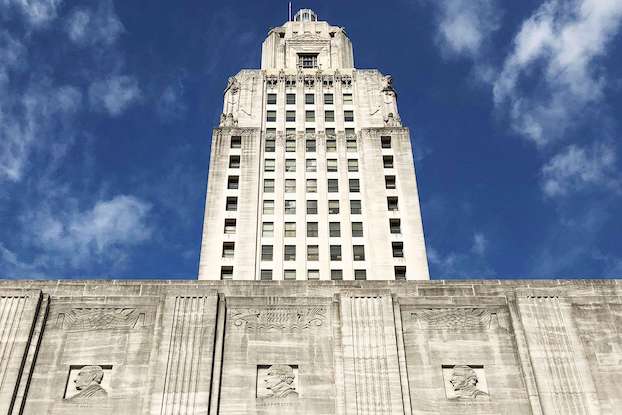Informer: Lake Charles native, former Navy officer works for DHS
Published 11:30 am Wednesday, September 11, 2013
There was a high-ranking naval officer from Lake Charles, and his picture appeared on the cover of the American Press when the submarine he commanded surfaced at the North Pole. Whatever happened to him? Did he ever make admiral?
The officer, Kenneth Scott Pugh, retired from the Navy in 2005 with the rank of captain, which is the equivalent of colonel in the land forces. But he still works for the U.S. government.
In the picture the reader refers to — from the June 17, 1994, edition of the paper — Pugh holds a “Lake Charles 4080 miles” sign in one hand and an arrow in the other. In the background, the tower of his vessel, the nuclear-powered attack sub USS Whale, rises above the ice.
Pugh commanded the crew of the Whale from February 1994 to June 1996 and then served as submarine operations officer for the U.S. Pacific Fleet at Pearl Harbor, Hawaii.
After that, he was posted to the Pentagon, where he oversaw classified programs and, after 9/11, helped re-establish the Navy’s Special Programs Office, which was destroyed when American Airlines Flight 77 smashed into the building.
He talked to the American Press about that day in a profile published in July 2003, a couple of months after then-Secretary of Defense Donald Rumsfeld mentioned Pugh in a speech. From the story:
On Sept. 11, 2001, Pugh was working on the fifth floor of the building’s outer ring when the plane crashed into the first, second and third floors below.
“We had heard about New York, and we had one office area where we had a TV that shows CNN all the time,” Pugh said, adding that he and his colleagues had only been watching the news for two or three minutes before the crash.
“We didn’t realize a plane had hit the Pentagon,” he said. “We could see the fire outside the window and feel the heat. Most of us had thought it was bomb.”
As they evacuated, Pugh said, it took six tries to find a stairwell that wasn’t engulfed in flames. After about 10 minutes, he and his co-workers were safe outside.
“When you got out there, it was not like what I would have thought an air crash site would look like,” said Pugh, who expected to see airplane debris or a gaping hole. Instead, all he said he could see was smoke. An hour and a half later, he would learn about the plane responsible for the damage.
After serving at the Pentagon, Pugh — who has degrees in physics — was named the math and sciences dean at the U.S. Naval Academy, where he worked until his retirement.
He took a job with the U.S. Department of Homeland Security in 2007 and now works in the Interagency Programs Office in the agency’s Science and Technology Directorate.
He is also a member of the Federal Smart Grid Task Force, a group of experts from nearly a half dozen federal agencies who work to improve the security and efficiency of the nation’s energy grid.
Pugh lives in Annapolis, Md., with his wife. He is a graduate of LaGrange High School.
Incidentally, the Port of Lake Charles named Henry Pugh Boulevard, south of town, after his father, a former port employee who died last year.
Online: www.smartgrid.gov.
The Informer answers questions from readers each Sunday, Monday and Wednesday. It is researched and written by Andrew Perzo, an American Press staff writer. To ask a question, call 494-4098, press 5 and leave voice mail, or email informer@americanpress.com
(Special to the American Press)





